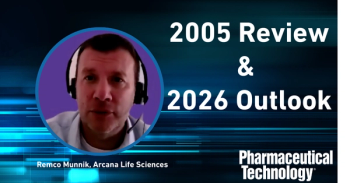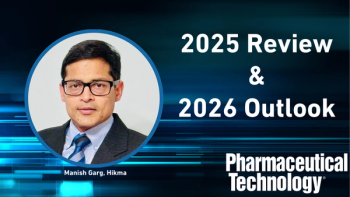
Industry Needs New Approach To Manage Growing Supply-Chain Complexity
The growth in pharmaceutical outsourcing is creating a more complex and risky supply-chain environment, according to a report issued last week.
The growth in pharmaceutical outsourcing is creating a more complex and risky supply-chain environment, according to a report issued last week. The
One-hundred-and-twelve industry executives from pharmaceutical, medical device, and biotechnology companies worldwide participated in the survey. Fifty percent of survey respondents said that raw materials sourced outside of the United States present the greatest vulnerability in the supply chain, and 61% said that contaminated or nonconforming raw materials are likely to be the top threat over the next five years.
Part of the cause for concern is that drug development is moving more and more to sites in developing countries such as China, India, Mexico, and Brazil—also pharmerging countries—which involves more risk. Key survey findings, according to a PwC Health Industries Group press release, include the following:
- Ninety-four percent of survey respondents believe that global product sales outside the US will increase in the next few years, while 78% said global sourcing outside the United States will increase and 76% said their global manufacturing outside the US will increase.
- Forty-four percent of respondents believe that the growing threat of counterfeiting will be a business risk in the next five years; 35% say the same of illegal product diversions.
- Only 25% of respondents share common practices and information with suppliers, and only 3% have access to suppliers’ data in real time.
- Nearly 60% of industry executives said that they are concerned about the willingness of suppliers to provide information to address regulatory requirements, and 44% are concerned about their distributors’ willingness to provide information needed to meet these requirements.
- Survey participants noted four hurdles to implementing track-and-trace technology: cost; difficulty of implementation; lack of industry standards; and lack of regulatory requirement and guidance.
- Industry executives said that their preferred method for creating best practices around standards and guidance is through industry consortium.
“With manufacturing, sourcing, and the sale of medical products expected to increase dramatically in the emerging markets, the geographical expansion of the supply chain will make it more difficult to manage, as will the industry’s changing product mix,” said Wynn Bailey, PwC pharmaceutical and life-sciences advisory services partner. “In order to meet the demands of globalization, the pharmaceutical supply chain will need to become much more flexible, with different manufacturing routes and distribution channels for different kinds of products. Companies will need to implement new strategies, processes, and technology to proactively reduce and control risks.”
In this regard, the report’s authors suggest the following road-map components to a safer pharmaceutical supply chain:
- On-demand visibility (e.g., of systems and supplier visibility)
- Control over the complete supply network (e.g., metrics and track-and-trace)
- Collaboration (i.e., among industry, regulators, suppliers, and internally).
More details about each component are described in the full report.
See related PharmTech articles:
Newsletter
Get the essential updates shaping the future of pharma manufacturing and compliance—subscribe today to Pharmaceutical Technology and never miss a breakthrough.




